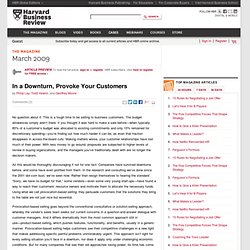

How to Write an Elevator Pitch. By Babak Nivi | 8:57 AM April 1, 2009 What’s an elevator pitch?

An elevator pitch is a brief e-mail summary of your business. Or a short story that you can tell in the course of a elevator ride. You use the elevator pitch to get meetings with prospective investors. Typically, you ask someone whom the investor trusts to pass along your elevator pitch with a thumbs-up. And if you don’t have an introduction, an amazing elevator pitch is critical to a successful cold e-mail. Your elevator pitch is more important than a business plan or executive summary. We crafted this annotated elevator pitch using information we gleaned from one of Marc Andreessen’s blog posts about Ning (Marc is also the founder of Netscape): Subject: Introducing Ning to Blue Shirt Capital [A useful subject line!] Hi [Middleman], Thanks for offering to introduce us to Blue Shirt Capital. Briefly, Ning lets you create your own social network for anything. Best, When in doubt, follow this template exactly.
In a Downturn, Provoke Your Customers - HBR.org. The Idea in Brief The downturn is making it tougher than ever to make a sale.

The companies you serve are slashing budgets. Senior executives—not the managers you’ve traditionally dealt with—are now the decision makers. But you can motivate those executives to allocate funds for your offering—by using provocation-based selling: Identify a critical problem facing your customer—one so ominous that, even in a downturn, it will find the money to address it. The Idea in Practice Follow these steps to provocation-based selling: Identify a Critical Problem Note what securities analysts are saying about the target company or its industry. They seriously jeopardize the company’s ability to compete. A tech company targeting wireless communications carriers identified a critical problem facing them: plunging average-revenue-per-user (ARDU), leading to losses of $100 million to $1 billion annually. Formulate Your Provocation Example: Lodge Your Provocation. The Smart Growth Manifesto - Umair Haque - HarvardBusiness.org.
Obama is stimulating.

Davos is deliberating. C-levels are eliminating. Wall St is recriminating. Welcome to the macropocalypse: no one, it seems, can put the global economy back together again. It’s time to reboot capitalism. Here’s a suggestion for what should be at the top of agenda of every decision-maker across the economy, from Davos, to Obama, to Sand Hill Road, to the revolutionaries in tiny garages hatching tomorrow’s Googles: reconceiving growth. Why? 20th century capitalism is eating itself. Reigniting growth requires rethinking growth. 20th century growth was dumb. 21st century economies will be powered by smart growth.
Here are the four pillars of smart growth – for economies, communities, and corporations: 1. 2. 3. 4. Here’s a final point — and a question. Smart economies are driven by smart growth. Capitalism 2.0 cannot be powered by growth.1.0: that’s why the race for smart growth is inevitable. Can you build a business powered by smart growth?